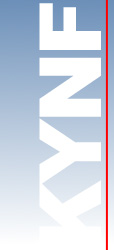| Prevailing
Wind Direction Over Eastern Idaho and Western Wyoming Mountain Weather
Jim Woodmencey, Meteorologist
P.O. Box 2221 - Jackson, WY - 83001
Phone & Fax: (307) 739-9282
www.mountainweather.com
jwoodmen@wyoming.com
To: Dr. Brent Blue
From: Jim Woodmencey
RE: Prevailing winds
Brent,
Date: July 15, 1999
In answer to your question about the prevailing wind direction over eastern Idaho and
western Wyoming, and its relationship to particulate matter emitted into the atmosphere
"upstream" of Jackson Hole. I have the following comments:
- The prevailing wind direction (ie. the average direction from which the wind blows) on
an annual basis over this region is from the West-Southwest. This would be true from the
surface up to approximately the 18,000-foot elevation in the free air.
- Near the surface in eastern Idaho, a Southwesterly wind is most common, as it tends to
closely follow the confines of the topography. blowing from the Southwest to the
Northeast, up the Snake River Plain and rising up onto the Yellowstone Plateau.
- In the mid to upper levels of the atmosphere over eastern Idaho and western Wyoming
(i.e. in the free-air above the affect of the topography), a Westerly wind flow pattern
probably represents the norm. Averaging a little more Northwesterly during the winter
months and more South westerly during the Summer months over the Teton Range.
- Other atmospheric variables. in addition to wind direction, will determine how any
particulate matter in the air will be distributed. Wind speed, atmospheric stability, and
turbulence, at various levels up through the atmosphere, will affect the effluent
dispersal, and will determine the concentrations received downstream from the source.
- In general, particulate matter that is emitted into the airflow over eastem Idaho will
be directed, the majority of the time, over some portion of northwestern Wyoming.

Prevailng westerly winds threaten to carry airborne incinerator particles from the
INEEL facility across the Idaho/Wyoming border and into Yellowstone and Grand Teton
National Parks.
Return to the top of this page... |


